Filter by
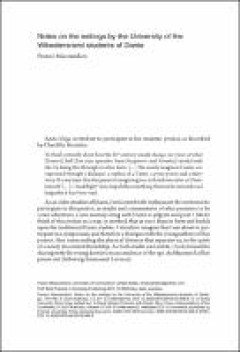
Chapter Notes on the writings by the University of the Witwatersrand students…
I welcomed with enthusiasm the invitation to participate in the project of the young dantisti of the University of the Witwatersrand, as described by Chariklia Martalas: “To think critically about how the 21st century would change our views of Dante’s Divine Comedy if we interpret it through creative form.†I like to think of this project as a way, or method, that at once dep…
- Edition
- -
- ISBN/ISSN
- 9788855184588
- Collation
- Pages 18
- Series Title
- -
- Call Number
- 372 MAS c

Material Noise: Reading Theory as Artist's Boo
In Material Noise, Anne Royston argues that theoretical works signify through their materiality—such nonsemantic elements as typography or color—as well as their semantic content. Examining works by Jacques Derrida, Avital Ronell, Georges Bataille, and other well-known theorists, Royston considers their materiality and design—which she terms “noise”—as integral to their meaning. In …
- Edition
- -
- ISBN/ISSN
- 9780262354950
- Collation
- -
- Series Title
- -
- Call Number
- 372 ROY m

Reading With My Eyes Open : Embracing the Critical and The Personal in Langua…
Untangling the various approaches to language teaching and their history, Gerdi Quist maps recent thinking in language studies at university. Using an interdisciplinary theoretical framework, drawn from educational philosophy, cultural studies, intercultural studies and language pedagogy, the author discusses the many tensions and currents in contemporary language teaching. The author puts forw…
- Edition
- -
- ISBN/ISSN
- 9781909188211
- Collation
- -
- Series Title
- -
- Call Number
- 400 QUI r
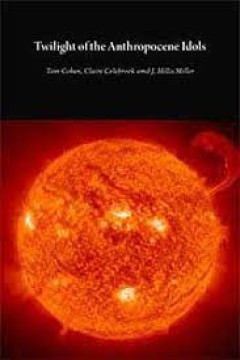
Twilight of the Anthropocene Idols
Following on from Theory and the Disappearing Future, Cohen, Colebrook and Miller turn their attention to the eco-critical and environmental humanities’ newest and most fashionable of concepts, the Anthropocene. The question that has escaped focus, as “tipping points” are acknowledged as passed, is how language, mnemo-technologies, and the epistemology of tropes appear to guide the accele…
- Edition
- -
- ISBN/ISSN
- 9781785420160
- Collation
- -
- Series Title
- -
- Call Number
- -
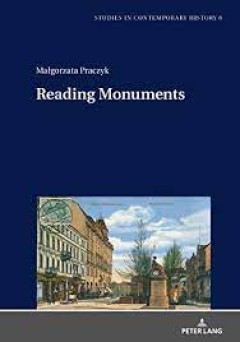
Reading Monuments A Comparative Study of Monuments in Poznań and Strasbourg…
This book tells the story of monuments in two cities that share a parallel and turbulent history: Strasbourg and Poznan. With the Franco-Prussian War begins the well-known story of the destruction and erection of memorials. This book not only explains the mechanisms related to how memorials have functioned in the past, but also contributes to our understanding of current modes of their percepti…
- Edition
- -
- ISBN/ISSN
- 9783653071481
- Collation
- -
- Series Title
- -
- Call Number
- -
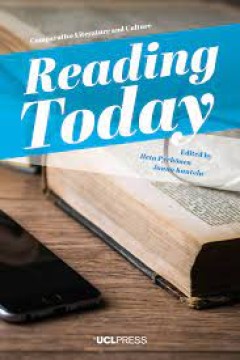
Reading Today
New technologies are changing our reading habits. Laptops, e-readers, tablets and other handheld devices supply new platforms for reading, and we must learn to manage them by scrolling, clicking or tapping. Reading Today places reading in current literary and cultural contexts in order to analyse how these contexts challenge our conceptions of who reads, what reading is, how we read, where we r…
- Edition
- -
- ISBN/ISSN
- 9781787351950
- Collation
- -
- Series Title
- -
- Call Number
- -

Bridge the Distance : An Oral History of COVID-19 in Poems
Overview: During the early days of quarantine, many teachers turned to poetry to process their experiences. Teacher-Poets Writing to Bridge the Distance: An Oral History of COVID-19 preserves this poetry and teachers' experiences as they navigated a new reality in education.
- Edition
- -
- ISBN/ISSN
- -
- Collation
- -
- Series Title
- -
- Call Number
- 420 WOO b
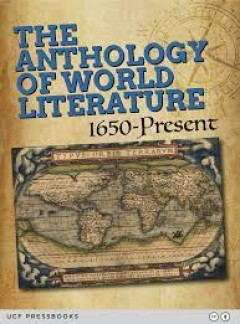
The Anthology of World Literature 1650-present
Overview: By engaging with this resource which presents texts by diverse world writers from 1650 to the present, learners will: (1) engage with diverse world writers in translation, including canonical and less canonical texts, and (2) identify literary conventions and trends across genres. The texts are in chronological order, but can be adapted by the faculty in whatever way they see fit. Eac…
- Edition
- -
- ISBN/ISSN
- -
- Collation
- -
- Series Title
- -
- Call Number
- 418.4 HOH a
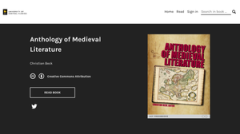
Anthology of Medieval Literature
This e-text of Medieval literature provides a variety of readings that can be used for English literature courses and contains public domain, Creative Commons licensed images, and works for which permissions have been obtained to include in this anthology
- Edition
- -
- ISBN/ISSN
- -
- Collation
- -
- Series Title
- -
- Call Number
- 418.4 ANT
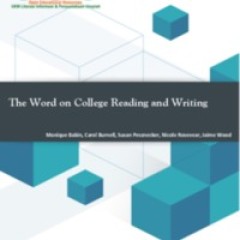
The Word on College Reading and Writing
Written by five college reading and writing instructors, this interactive, multimedia text draws from decades of experience teaching students who are entering the college reading and writing environment for the very first time. It includes examples, exercises, and definitions for just about every reading- and writing-related topic students will encounter in their college courses.
- Edition
- -
- ISBN/ISSN
- -
- Collation
- -
- Series Title
- -
- Call Number
- 400 BUR w
 Computer Science, Information & General Works
Computer Science, Information & General Works  Philosophy & Psychology
Philosophy & Psychology  Religion
Religion  Social Sciences
Social Sciences  Language
Language  Pure Science
Pure Science  Applied Sciences
Applied Sciences  Art & Recreation
Art & Recreation  Literature
Literature  History & Geography
History & Geography